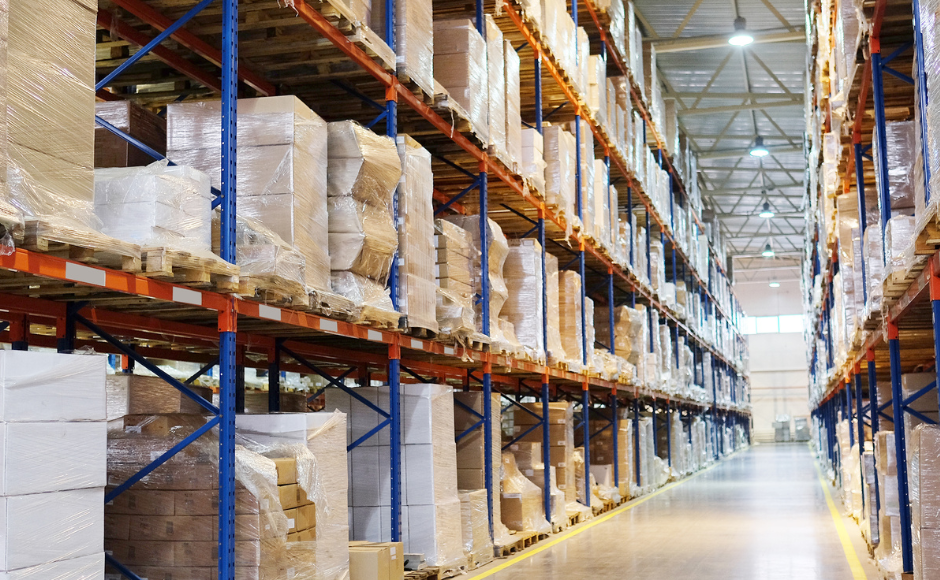Warehouse lighting and its standard components
In a warehouse, a well-designed lighting system is critical for worker visibility, productivity, and safety. Inbound and outbound processing activities are handled by industrial warehouses, logistics facilities, and commercial distribution centers. A strong collection of quantitative values and factors must be addressed while developing warehouse lighting systems.
- Visibility of the task and distribution of light
A variety of visual tasks are presented in industrial warehouse applications. Lighting can be difficult to achieve in confined spaces with towering narrow aisles. Appropriate illuminance (or light intensity), as well as enough contrast and color difference, are required for proper task visibility.
- Maintenance and Energy Efficiency
Keeping your energy budget in check might make the difference between profit and loss.
Warehouses are typically high bay structures with ceiling heights of 30-40 feet.
To achieve greater brightness at such heights, warehouse lighting equipment are necessary. Another significant component of warehouse lighting systems’ lifecycle costs is maintenance.
- Warehouse Lighting Standards and Styles
Open storage warehouses are storage spaces that do not have racks. High-rise storage facilities are typically mechanized, with rotating storage bins. Mobile racking is a cost-effective and space-saving alternative to fixed pallet racking. Lighting fixtures with higher protection ratings are required in cold storage facilities. مراهنات اون لاين
- Lighting for Low and High Bay
Many industrial structures are made up of skeletal frameworks that create an internal subspace known as a “bay.” The invention of high bay and low bay lights was prompted by the necessity to light huge storage facilities. For various warehouse lighting applications, various light sources, form factors, light patterns, and connector configurations have been devised.
- Traditional Lighting Techniques
High-intensity discharge (HID) lamps, which produce light by producing an electric arc between two tungsten electrodes, are used in traditional high bay and low bay light fixtures. Due to its high light output, HID lighting fixtures such as mercury vapor, high-pressure sodium, and metal halide lamps have been frequently employed in warehouse lighting.
- Warehouse and industrial lighting advantages
LED lighting solutions have increased the incentive for commercial and industrial facilities to modernize their lighting systems. By stimulating electrons and holes across the biased p-n junction, an LED creates narrow-spectrum light or electroluminescence. LEDs’ lower energy usage and maintenance costs, combined with their longer lifespan, resulting in shorter payback times, making light retrofitting or upgrading more affordable over time.
- Warehouse Lighting Fixtures with LEDs
The primary functions of an industrial light fixture are to precisely manage the distribution of emitted light, maintain consistent optical alignment, and provide repeatable photometric performance. It can also change the appearance of light sources visually by giving an integrative design based on optoelectronic properties, such as thermal environment because LED lighting is highly sensitive to junction temperature.
- System Stability and Thermal Management
An LED warehouse light’s heat dissipation efficiency is not simply determined by the heat sink’s design, material, and manufacturing method. The heat transmission mechanism of a lighting fixture includes several elements, hence the thermal performance of the system design cannot be isolated. If the thermal management assembly is poorly designed and/or there are performance concerns or manufacturing faults, the necessity to transmit thermal energy through so many paths would most likely limit efficiency in cooling the LED chips. اندرويد كازينو
- Power Electronics Dependability
The shortest board determines the bucket’s capacity. This is especially true for LED warehouse lighting fixtures that utilize a lot of power. LEDs are optoelectronic light sources, which means they need electrical circuits to operate. The electronic driver circuit is the lamp’s weakest component, limiting its lifespan. موقع قمار Poorly built driver circuits can power high-quality and long-life LEDs.
- Control of lighting
LED lighting systems can be programmed to gather daylight and reduce energy use, or to turn lights on and off at predetermined periods. Many traditional warehouse lighting options, particularly HID bulbs, do not work well with modern sensors and wireless controllers. LED lights have significant advantages for greater energy efficiency and user pleasure due to dimming and integration with occupancy sensors and photoelectric controllers.

